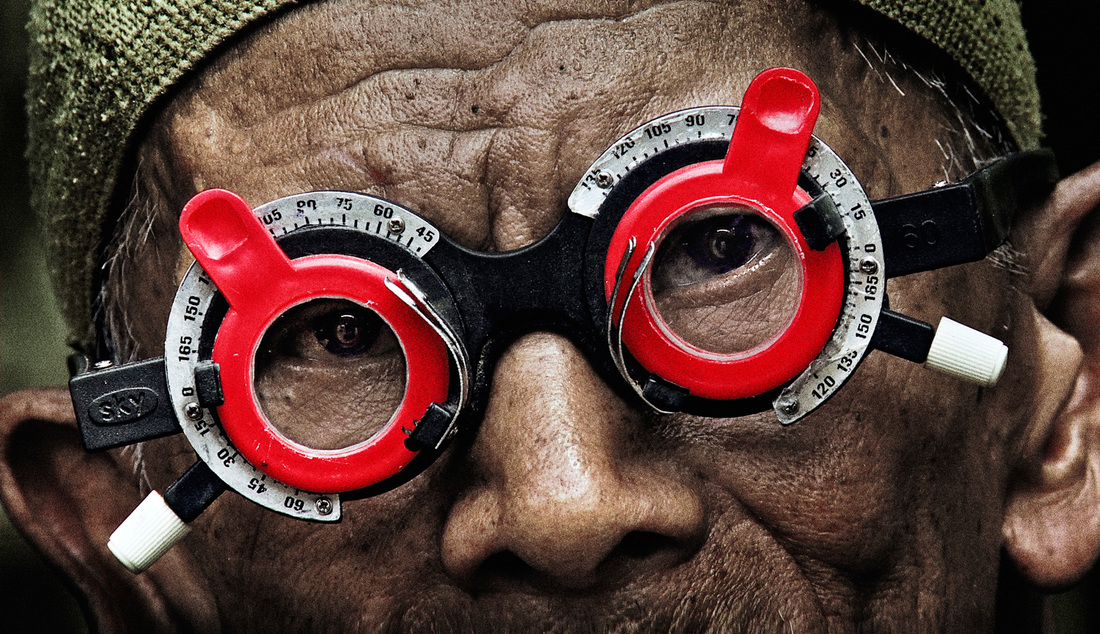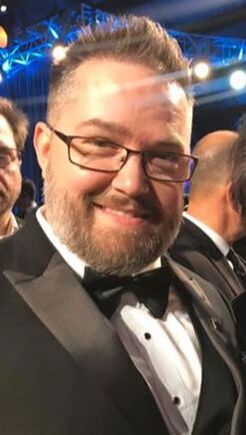Rating: 5 out of 5 starsGenre: Documentary Run Time: 1 hours, 30 minutes, Rated PG-13 Directed by Joshua Oppenheimer (The Act of Killing) Although it's not a requirement that you saw Joshua Oppenheimer's 2012 documentary The Act of Killing, it definitely provides depth and background to his latest film, The Look of Silence (opening today), which is more or less a companion piece to his original work. Both movies centered on the horrific genocide that took place back in the 1960s in Indonesia, where a failed government military overthrow led to what some believe is over a million dead. In The Act of Killing, true evil was on display, as the director, Oppenheimer, met with several different ex-military men - now grey and up in age - as they graphically illustrated the specifics of how they killed the imprisoned "communists" (who were labeled as such without trial or even reason). It was a sickening film, as these murderers boast about the horrendous acts that they still are proud of nearly 50 years later. The film shed light not only on this unspeakable tragic event of the past, but also its current relevance: Even as of today, families of the victims still live in a volatile, oppressive country ruled by some of the same exact people responsible for the mass killings...often times, right next door to descendants of the people who killed their family members those many years ago. The Look of Silence takes the gripping, shocking truths exposed in The Act of Killing and humanizes them to masterful affect. It focuses on one particular family and a grown man, Adi, whose brother was one of the people brutally murdered in the Snake River Massacre in 1965, one of the most egregious acts of violence that occurred during that time. The killing happened two years before he was even born, but these events haunt him and his family...these are wounds that have never healed. Adi - along with filmmaker Joshua Oppenheimer - is shown watching footage from The Act of Killing, where killers specifically discuss - again with big smiles on their face beaming with pride - the gruesome execution of Adi's brother. Adi's face tells much of this story, gives the film its name, and connects us to his story emotionally in ways that the first film was unable to do.
This is not a "take action" documentary, but more of an observational one. The camera just shows us life. It doesn't lead us. And it's because of this style that the film is so incredibly effective. Adi, for example, confronts one man after another, men who were directly responsible for his brother's death. Adi is an optometrist and uses this "eye test" as a way to get close to these individuals, before entering into a line of questioning that usually leaves his subjects beyond uncomfortable. There are clear symbols here: These men are truly blind and Adi is trying to make them see, figuratively and literally. All of the killers respond similarly, wondering why Adi wants to talk about the past. As he persists in trying to get these men to show even a morsel of remorse, he is met with resistance, death threats, and in some cases, furious anger. In between these encounters though, we are shown Adi's relationship with his bubbly daughter, a child full of life who has clearly been sheltered from the family's tragic past. We also see his tender relationship with his mother, whose every day ritual is to tend and care for her 104-year-old husband, Adi's father, who is deaf, blind and senile. We are meant to wonder if he is better off, in some ways, not knowing what is going on around him. Adi's reaction to watching Oppenheimer's footage is heart-breaking. His subtle confrontations are deeply engaging and nerve-racking. Much of what you see in The Look of Silence seems unthinkably surreal. It's a shock to hear the words that come out of these peoples' mouths. But it's the silent expressions that tell the tale. Not only does the film live and die on these moments of silence, but "The Look" of silence can also be applied to modern-day Indonesia...as an examination of how a country tries - unsuccessfully - to just brush over its past as if it did not happen. Progress would most definitely be made in Indonesia if someone chose to confront their issues head-on, like Adi chooses to do in the film. Sometimes opening up old wounds is the only way to ensure that they eventually heal properly. It will be hard for me to fathom that a better documentary can be made this year.
0 Comments
Leave a Reply. |
Looking for a specific movie or review?
Search Below: Categories
All
Archives
May 2024
|
tom santilli movie reviews
Tom Santilli is a professional film critic, TV personality, host and
the Executive Producer of Movie Show Plus.
He also is the featured film critic appearing on WXYZ Channel 7 Action News in Detroit,
and appeared weekly on FOX-2 in Detroit from 2016-2020.
Feel free to use the "search" below to find your favorite titles.
TOM'S GRADING SCALE:
B- and above: Thumbs Up
C+ or below: Thumbs Down
Currently Airing:Check Local Listings
|
For more information on Movie Show Plus, Email: |


 RSS Feed
RSS Feed
